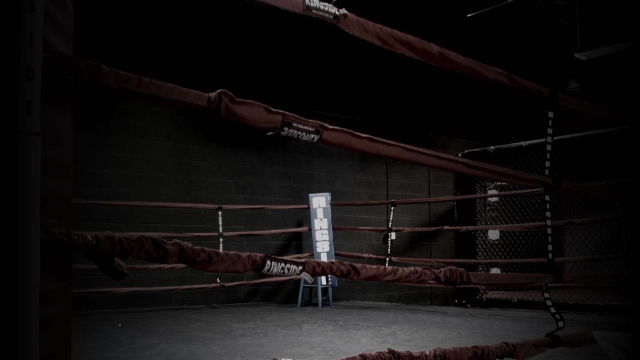In the world of combat sports, there are a multitude of disciplines that have captivated audiences with their grace, skill, and raw power. Boxing, Muay Thai, Kickboxing, and Jiu Jitsu stand out as some of the most popular and influential combat arts today. Each with its unique set of techniques and strategies, these disciplines offer practitioners a way to express themselves physically and mentally while testing their limits in the ring or on the mat.
Boxing, known as the "sweet science," focuses on the art of punching with precision, speed, and agility. With its roots dating back thousands of years, boxing has evolved into a highly refined and technical sport that demands discipline, lightning-fast reflexes, and impeccable footwork. Whether it’s the heart-stopping knockouts or the strategic battles of endurance, boxing has always been a captivating spectacle that showcases the power and finesse of the human body.
Muay Thai, also known as the "art of eight limbs," originates from Thailand and combines punches, kicks, elbows, and knees into a devastating arsenal of strikes. Renowned for its intensity, Muay Thai pushes fighters to their physical and mental limits, emphasizing strength, conditioning, and technique. The power behind each strike, the intricate clinch work, and the awe-inspiring kicks make Muay Thai a truly thrilling martial art to watch and practice.
Kickboxing, a hybrid martial art that draws elements from boxing and traditional martial arts, showcases a wide array of striking techniques. With its origins in Japan and the United States, kickboxing allows practitioners to use punches, kicks, and sometimes knees and elbows. It requires a balanced mix of power, speed, agility, and accuracy. Kickboxing has gained popularity for its dynamic and fast-paced nature, luring spectators with its explosive exchanges and high-energy bouts.
Jiu Jitsu, a grappling-based martial art, revolves around controlling and submitting opponents through a combination of techniques, leverage, and strategy. Originating from Japan and Brazil, Jiu Jitsu focuses on ground fighting, emphasizing submissions, joint manipulations, and positional control. Unlike striking arts, Jiu Jitsu relies on technique and leverage rather than sheer strength, making it an intriguing and empowering discipline for practitioners of all sizes and genders.
As we delve into the art of combat, exploring the realms of boxing, Muay Thai, kickboxing, and Jiu Jitsu, we discover the unique characteristics and challenges each discipline presents. From the precise punches of boxing to the devastating kicks of Muay Thai, the explosive strikes of kickboxing, and the intricate grappling of Jiu Jitsu, the world of combat sports offers endless opportunities for athletes to express themselves, find personal growth, and test their mettle. So step into the ring, onto the mat, and join us as we embark on this journey through the art of combat.
Boxing: The Sweet Science of Striking
Boxing is a dynamic combat sport that focuses on punches and footwork. It requires great agility, speed, and precision. With a rich history dating back centuries, boxing has evolved into a refined discipline that demands intense training and discipline.
In the ring, boxers showcase their skills in a strategic dance, using a variety of punches such as jabs, crosses, hooks, and uppercuts. These punches are executed with finesse and power, aiming to score points or knock out the opponent. The art of boxing lies in the mastery of timing, distance, and defensive maneuvers.
Boxing is not only a sport but also an effective means of self-defense. The rigorous training involved in boxing can instill discipline, improve physical fitness, and boost confidence. It teaches fighters how to evade and block incoming strikes while delivering their own accurate and powerful blows.
In competitive boxing, fighters are divided into weight classes to ensure fair matchups and minimize the risk of injury. This allows boxers to test their skills against opponents of similar size and build. Whether in the amateur or professional circuit, boxing offers an electrifying spectacle for both participants and spectators alike.
2. Muay Thai: The Art of Eight Limbs
Muay Thai is a striking martial art that originated in Thailand. Known as the "Art of Eight Limbs," it utilizes the fists, elbows, knees, and shins to deliver powerful strikes. Combining techniques from boxing and kickboxing with unique elements, Muay Thai offers a distinctive and formidable approach to combat.
The foundation of Muay Thai lies in its emphasis on physical conditioning. Practitioners undergo rigorous training to develop strength, stamina, and flexibility. This training encompasses various techniques such as high-intensity pad work, heavy bag drills, and intense sparring sessions, all aimed at honing their skills and mental resilience.
One of the defining features of Muay Thai is its use of the clinch. This technique allows fighters to control their opponents by securing a grip around the neck or arms. Once in the clinch, fighters can employ devastating strikes, such as knee and elbow strikes, making it a highly effective close-quarters combat skill.
Muay Thai also places great importance on strategy and timing. Fighters learn to read their opponents, anticipate their movements, and respond with well-placed strikes. Additionally, Muay Thai practitioners are trained in defensive techniques, including evasive footwork and blocking incoming strikes, enabling them to effectively counter their opponents.
With its unique blend of techniques and focus on physical conditioning, Muay Thai offers a dynamic and exhilarating martial arts experience. Whether in the ring or as a form of self-defense, it continues to captivate enthusiasts worldwide, showcasing the impressive artistry and adaptability of the "Art of Eight Limbs."
3. Kickboxing and Jiu Jitsu: Blending Striking and Grappling
In the world of combat sports, there are two diverse disciplines that have gained significant popularity: Kickboxing and Jiu Jitsu. Both disciplines offer unique approaches to combat, blending striking and grappling techniques in their respective styles.
Kickboxing, known for its dynamic and explosive strikes, focuses primarily on punches, kicks, and knee strikes. Practitioners of this discipline train extensively in developing their striking skills, combining speed, accuracy, and power to deliver devastating blows to their opponents. The fluid movement and agility displayed in kickboxing matches make it a fascinating and highly competitive sport to watch.
On the other hand, Jiu Jitsu is a martial art that emphasizes ground fighting and submission holds. It relies on technique, leverage, and grappling maneuvers rather than relying solely on brute strength. Jiu Jitsu practitioners are skilled in using joint locks and chokeholds to immobilize their opponents, regardless of their size or strength. This style is all about strategic moves and gaining positional advantage to control the fight.
The combination of both kickboxing and Jiu Jitsu techniques brings a well-rounded approach to combat. By blending striking and grappling, practitioners can adapt to various situations in the ring or in self-defense scenarios. This hybrid style enhances their ability to effectively strike from a distance, as well as close the distance and engage in clinches or takedowns when necessary.
By incorporating elements from both disciplines, fighters can exploit their strengths, neutralize their opponent’s attacks, and capitalize on any opportunities that arise during a match. The complementary nature of kickboxing and Jiu Jitsu creates a unique and dynamic fighting style that requires practitioners to be well-versed in both striking and grappling techniques.
In conclusion, the blend of kickboxing and Jiu Jitsu creates a formidable combination of striking and grappling techniques, offering fighters a versatile skill set and enhancing their overall combat capabilities. Embracing these two disciplines allows practitioners to adapt to different fighting scenarios, making them well-rounded martial artists in the ever-evolving world of combat sports.







